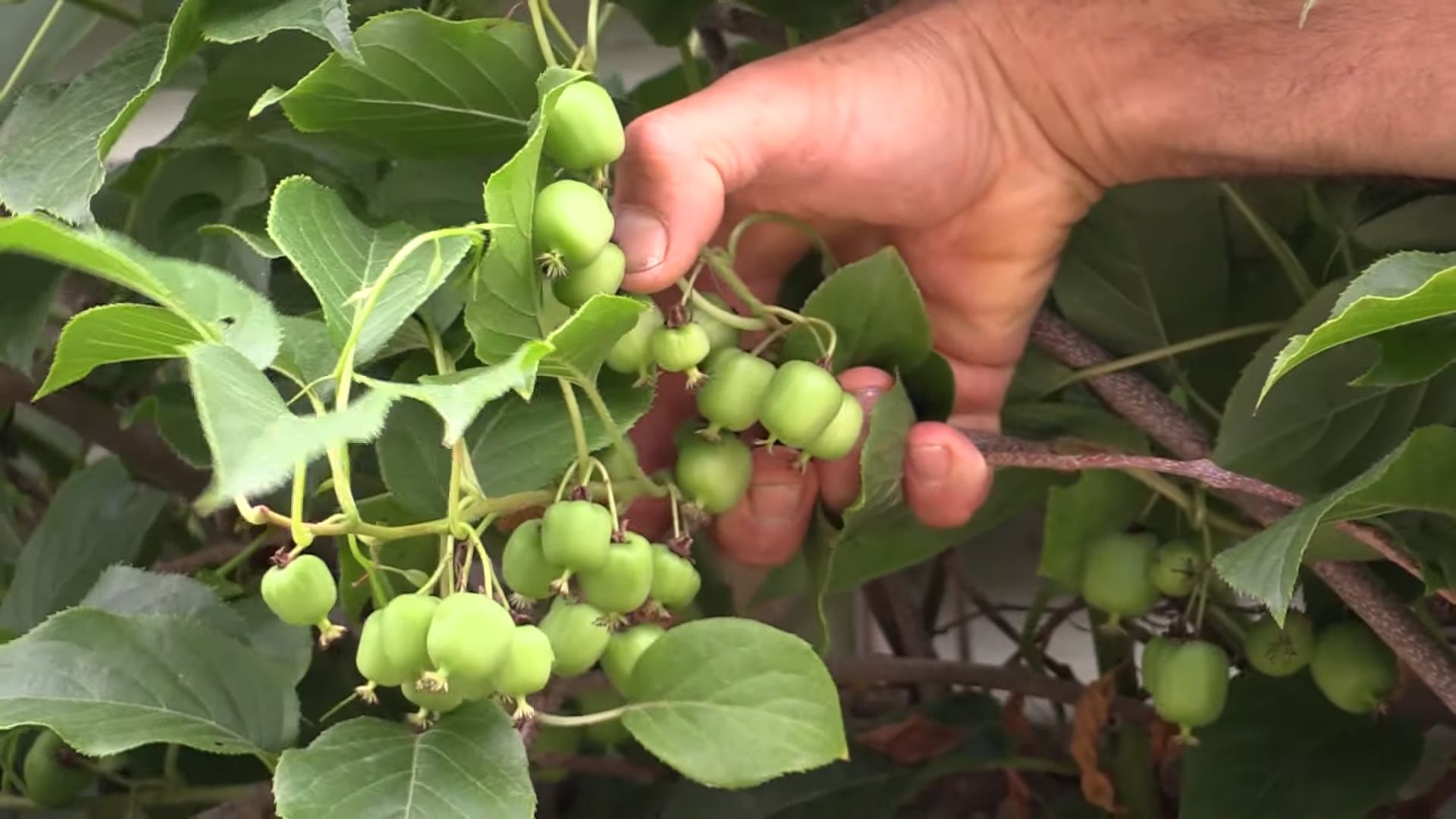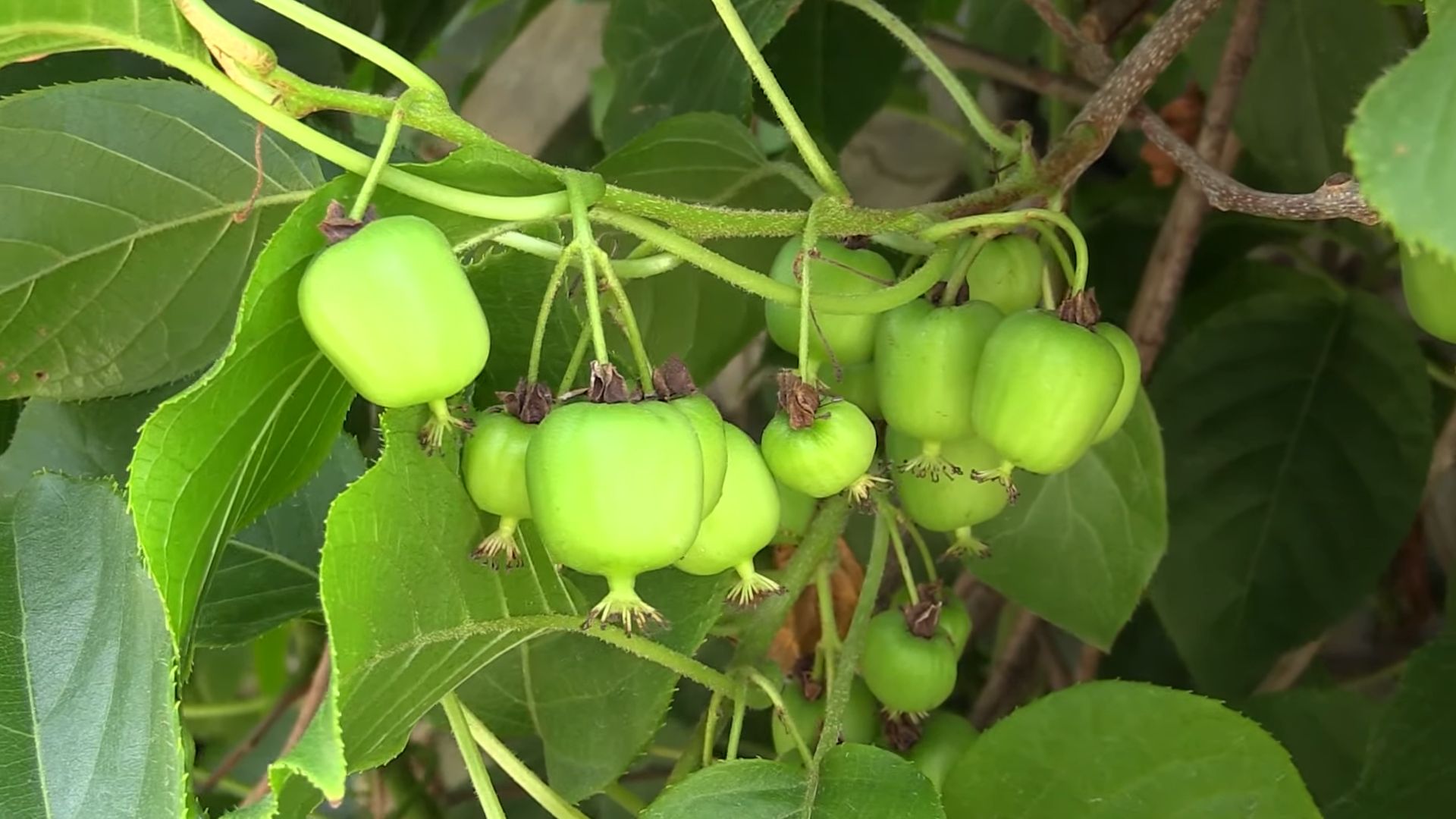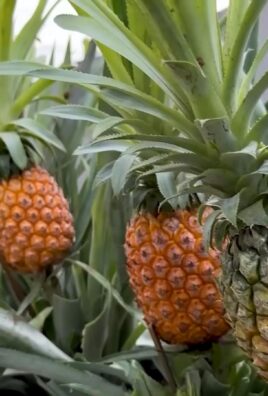Grow Kiwi Fruit at Home? Absolutely! Imagine plucking juicy, tangy kiwis straight from your own backyard. It sounds like a tropical dream, doesn’t it? But trust me, with a little know-how, you can transform that dream into a delicious reality. This isn’t just about gardening; it’s about creating a sustainable food source and adding a touch of the exotic to your everyday life.
The kiwi fruit, originally known as the Chinese gooseberry, has a fascinating history. It was brought to New Zealand in the early 20th century and rebranded as the “kiwi fruit,” quickly becoming a national symbol. Now, you can bring a piece of that history to your own garden!
Why should you learn to grow kiwi fruit at home? Well, store-bought kiwis can be expensive and sometimes lack the vibrant flavor of homegrown produce. Plus, there’s immense satisfaction in nurturing a plant from a tiny seedling to a fruit-bearing vine. In this article, I’m going to share some simple, yet effective DIY tricks and hacks that will help you successfully cultivate these fuzzy delights, even if you’re a complete beginner. Get ready to roll up your sleeves and embark on a rewarding gardening adventure!

Grow Your Own Delicious Kiwi Fruit: A DIY Guide
Okay, so you want to grow kiwi fruit at home? Awesome! It might seem intimidating, but trust me, with a little patience and the right know-how, you can be enjoying homegrown kiwis before you know it. I’m going to walk you through everything you need to know, from choosing the right variety to harvesting your bounty. Let’s get started!
Choosing the Right Kiwi Variety
Before you even think about planting, you need to pick the right kiwi variety for your climate. Not all kiwis are created equal, and some are much better suited to certain regions than others.
* Hardiness: This is the most crucial factor. Make sure the variety you choose can withstand the lowest temperatures in your area. Look for varieties specifically labeled as “hardy.”
* Self-Fertile vs. Dioecious: Some kiwi varieties are self-fertile, meaning a single plant can produce fruit. Dioecious varieties, on the other hand, require both a male and a female plant for pollination. For beginners, I highly recommend starting with a self-fertile variety like ‘Issai’ or ‘Jenny’ to simplify things.
* Fruit Size and Flavor: Consider the size and flavor of the fruit you prefer. Some varieties produce larger, sweeter kiwis than others. Read descriptions carefully to find one that appeals to you.
* Space Requirements: Kiwi vines are vigorous growers and need plenty of space. Make sure you have enough room for the variety you choose to mature.
Preparing the Planting Site
Kiwi vines need a sunny, sheltered location with well-drained soil. Here’s how to prepare the perfect spot:
* Sunlight: Kiwis need at least 6-8 hours of direct sunlight per day.
* Soil: The soil should be well-draining and slightly acidic (pH 6.0-6.5). If your soil is heavy clay, amend it with plenty of organic matter like compost or well-rotted manure.
* Shelter: Protect your kiwi vines from strong winds, which can damage the delicate foliage and fruit. A south-facing wall or fence can provide excellent shelter.
* Support Structure: Kiwi vines are climbers and need a strong support structure to grow on. A sturdy trellis, arbor, or pergola will work well. Make sure the structure is strong enough to support the weight of a mature vine laden with fruit.
Planting Your Kiwi Vine
Now for the fun part – planting! Here’s a step-by-step guide:
1. Dig the Hole: Dig a hole that is twice as wide and just as deep as the root ball of your kiwi plant.
2. Amend the Soil: Mix some compost or well-rotted manure into the soil you removed from the hole. This will provide extra nutrients and improve drainage.
3. Remove the Plant from the Container: Gently remove the kiwi plant from its container, being careful not to damage the roots. If the roots are circling the pot, gently loosen them with your fingers.
4. Place the Plant in the Hole: Position the plant in the center of the hole, making sure the top of the root ball is level with the surrounding soil.
5. Backfill the Hole: Fill the hole with the amended soil, gently firming it around the roots.
6. Water Thoroughly: Water the newly planted kiwi vine thoroughly to settle the soil and help the roots establish.
7. Mulch: Apply a layer of mulch around the base of the plant to help retain moisture, suppress weeds, and regulate soil temperature. Use organic mulch like wood chips or straw.
Caring for Your Kiwi Vine
Once your kiwi vine is planted, it’s important to provide proper care to ensure healthy growth and abundant fruit production.
* Watering: Kiwi vines need consistent moisture, especially during dry periods. Water deeply and regularly, but avoid overwatering, which can lead to root rot.
* Fertilizing: Fertilize your kiwi vine in the spring with a balanced fertilizer. Follow the instructions on the fertilizer package. You can also amend the soil with compost or well-rotted manure in the fall.
* Pruning: Pruning is essential for kiwi vines. It helps to maintain the shape of the vine, improve air circulation, and promote fruit production. Prune in late winter or early spring, before new growth begins.
* First Year: Focus on establishing a strong main trunk. Select the strongest shoot and train it to grow up the support structure. Remove any other shoots that emerge from the base of the plant.
* Second Year and Beyond: Prune to remove any dead, damaged, or crossing branches. Shorten the fruiting laterals (the branches that produce fruit) to encourage new growth.
* Pest and Disease Control: Kiwi vines are generally resistant to pests and diseases, but it’s still important to monitor them regularly. Watch out for common pests like aphids and spider mites, and treat them with insecticidal soap or neem oil if necessary.
* Support: As your kiwi vine grows, continue to train it to grow along the support structure. Tie the vines to the structure with soft twine or plant ties.
Pollination (If You Have Dioecious Varieties)
If you’re growing dioecious kiwi varieties, you’ll need to ensure proper pollination.
* Planting Ratio: Plant one male plant for every 6-8 female plants.
* Proximity: Make sure the male and female plants are planted close enough together for the bees to easily transfer pollen.
* Bee Attractants: Plant flowers that attract bees near your kiwi vines to encourage pollination.
Harvesting Your Kiwi Fruit
Harvesting is the most rewarding part of growing kiwi fruit! Here’s how to know when your kiwis are ready to pick:
* Timing: Kiwi fruit typically ripens in the fall. The exact timing will depend on the variety and your climate.
* Touch: Gently squeeze the fruit. If it gives slightly to the touch, it’s ready to harvest.
* Taste Test: Pick a few fruits and let them ripen indoors for a few days. If they taste sweet and delicious, it’s time to harvest the rest.
* Harvesting Technique: Gently twist the fruit from the vine. Be careful not to damage the fruit or the vine.
Ripening and Storing Your Kiwi Fruit
Kiwi fruit is often harvested when it’s still firm and needs to ripen indoors.
* Ripening: Place the harvested kiwis in a paper bag with an apple or banana. These fruits release ethylene gas, which speeds up the ripening process.
* Storage: Store ripe kiwis in the refrigerator for up to several weeks.
Troubleshooting Common Problems
Even with the best care, you might encounter some problems along the way. Here are a few common issues and how to address them:
* Lack of Fruit: If your kiwi vine isn’t producing fruit, it could be due to several factors:
* Incorrect Variety: Make sure you have a self-fertile variety or both male and female plants.
* Poor Pollination: If you have dioecious varieties, ensure proper pollination by planting bee-attracting flowers and maintaining the correct male-to-female ratio.
* Insufficient Sunlight: Kiwi vines need at least 6-8 hours of direct sunlight per day.
* Improper Pruning: Prune your kiwi vine correctly to encourage fruit production.
* Yellowing Leaves: Yellowing leaves can be a sign of nutrient deficiency or overwatering. Check the soil pH and amend with compost or fertilizer if necessary. Ensure the soil is well-draining.
* Pest Infestations: Monitor your kiwi vine regularly for pests and treat them promptly with insecticidal soap or neem oil.
Enjoying Your Homegrown Kiwis
Congratulations! You’ve successfully grown your own kiwi fruit. Now it’s time to enjoy the fruits of your labor. Eat them fresh, add them to smoothies, or use them in your favorite recipes. The possibilities are endless!
Growing kiwi fruit at home is a rewarding experience that requires patience and dedication. But with the right knowledge and care, you can enjoy delicious, homegrown kiwis for years to come. Good luck, and happy gardening!

Conclusion
So, there you have it! Growing kiwi fruit at home might seem like a daunting task reserved for seasoned gardeners, but with a little patience, the right knowledge, and this straightforward DIY trick, you can absolutely cultivate your own delicious and exotic fruit. We’ve demystified the process, breaking it down into manageable steps that anyone can follow, regardless of their gardening experience.
Why is this DIY approach a must-try? Because it empowers you to take control of your food source, enjoy the satisfaction of nurturing a plant from seedling to fruit-bearing vine, and savor the unparalleled taste of homegrown kiwi. Store-bought kiwi, while convenient, often lacks the intense sweetness and vibrant flavor of fruit ripened on the vine. Plus, you’ll know exactly what went into growing your kiwi – no mystery pesticides or long-distance transportation.
Beyond the basic method we’ve outlined, there’s plenty of room for experimentation and personalization. Consider these variations to tailor the process to your specific needs and preferences:
* Vertical Gardening: If you’re short on space, train your kiwi vines to grow vertically on a trellis or fence. This not only saves space but also adds a beautiful and productive element to your garden design.
* Container Gardening: While kiwi vines thrive in the ground, you can successfully grow them in large containers, especially if you live in a region with harsh winters. This allows you to move the plants indoors during colder months.
* Different Kiwi Varieties: Explore different kiwi varieties to find the ones that best suit your climate and taste preferences. ‘Hayward’ is a popular choice, but ‘Anna’ and ‘Issai’ are self-fertile options that simplify the pollination process.
* Organic Amendments: Enhance the soil with organic compost, worm castings, or aged manure to provide your kiwi vines with the nutrients they need to flourish.
Ultimately, the key to success in growing kiwi fruit at home lies in consistent care, attention to detail, and a willingness to learn from your experiences. Don’t be afraid to experiment, adapt, and fine-tune your approach as you go.
We wholeheartedly encourage you to give this DIY trick a try. Imagine the pride and joy of harvesting your own juicy, flavorful kiwi fruit, knowing that you nurtured it from a tiny seedling to a thriving vine. It’s a rewarding experience that connects you to nature and provides a delicious and healthy treat.
And most importantly, we want to hear about your journey! Share your experiences, successes, and challenges in the comments below. Let us know what worked for you, what didn’t, and any tips or tricks you discovered along the way. Together, we can create a community of kiwi enthusiasts and help each other grow the best possible fruit. So, grab your gardening gloves, prepare your soil, and embark on this exciting adventure of growing kiwi fruit at home! We can’t wait to see your results!
Frequently Asked Questions (FAQ)
What are the ideal growing conditions for kiwi fruit?
Kiwi fruit thrives in sunny locations with well-drained soil. They need at least 6-8 hours of sunlight per day to produce abundant fruit. The soil should be slightly acidic to neutral (pH 6.0-7.0) and rich in organic matter. Kiwi vines also require a sturdy support structure, such as a trellis or fence, as they can grow quite large and heavy. Protection from strong winds is also beneficial, as the vines can be susceptible to damage.
How long does it take for a kiwi vine to produce fruit?
Patience is key when growing kiwi fruit. It typically takes 3-5 years for a kiwi vine to start producing fruit after planting. The exact time frame can vary depending on the variety, growing conditions, and the age of the plant at the time of planting. Grafted plants tend to fruit sooner than those grown from seed. Consistent watering, fertilization, and proper pruning can help accelerate the fruiting process.
Do I need both male and female kiwi plants to get fruit?
Yes, most kiwi varieties are dioecious, meaning they have separate male and female plants. You need at least one male plant for every 6-8 female plants to ensure proper pollination and fruit production. The male plant provides the pollen necessary for the female plants to develop fruit. However, some self-fertile kiwi varieties, such as ‘Issai,’ can produce fruit without a separate male plant. Always check the specific requirements of the kiwi variety you choose.
How do I pollinate my kiwi plants if I don’t have enough bees?
If you notice a lack of bee activity in your garden, you can hand-pollinate your kiwi flowers to ensure fruit set. Use a small paintbrush to collect pollen from the male flowers and gently transfer it to the female flowers. The best time to hand-pollinate is during a warm, sunny day when the flowers are fully open. Repeat the process every few days during the flowering period to maximize pollination success.
What are some common pests and diseases that affect kiwi plants?
Kiwi plants can be susceptible to several pests and diseases, including spider mites, aphids, scale insects, and root rot. Regularly inspect your plants for signs of infestation or disease. Treat any problems promptly with appropriate organic or chemical controls. Good cultural practices, such as proper watering, fertilization, and pruning, can help prevent many pest and disease problems. Ensure good air circulation around the plants to reduce the risk of fungal diseases.
How often should I water my kiwi plants?
Kiwi plants need consistent moisture, especially during the growing season. Water deeply and regularly, ensuring the soil remains moist but not waterlogged. The frequency of watering will depend on the climate, soil type, and the age of the plant. Young plants need more frequent watering than established plants. Reduce watering during the dormant season. Mulching around the base of the plants can help retain moisture and suppress weeds.
What kind of fertilizer should I use for my kiwi plants?
Kiwi plants benefit from regular fertilization, especially during the growing season. Use a balanced fertilizer with a ratio of 10-10-10 or 14-14-14. Apply the fertilizer in early spring, just before new growth begins, and again in mid-summer. Avoid over-fertilizing, as this can lead to excessive vegetative growth at the expense of fruit production. Organic fertilizers, such as compost, aged manure, or worm castings, can also be used to provide essential nutrients.
How do I prune my kiwi vines?
Pruning is essential for maintaining the health and productivity of kiwi vines. Prune in late winter or early spring, before new growth begins. Remove any dead, damaged, or crossing branches. Thin out the vines to improve air circulation and sunlight penetration. Shorten the fruiting laterals to encourage fruit production. Train the vines to grow along the support structure. Regular pruning will help maintain the shape and size of the vines and promote abundant fruit production.
Can I grow kiwi fruit in a container?
Yes, you can grow kiwi fruit in a container, especially if you live in a region with harsh winters. Choose a large container with good drainage. Use a well-draining potting mix rich in organic matter. Select a self-fertile kiwi variety, such as ‘Issai,’ to simplify the pollination process. Place the container in a sunny location and provide a sturdy support structure for the vines to climb. Water and fertilize regularly. Move the container indoors during colder months to protect the plants from frost.
How do I know when my kiwi fruit is ripe?
Kiwi fruit does not ripen fully on the vine. Harvest the fruit when it is still firm but has started to soften slightly. The best way to test for ripeness is to cut open a fruit and taste it. If it is sweet and juicy, it is ready to harvest. You can also gently squeeze the fruit; if it yields slightly to pressure, it is likely ripe. After harvesting, store the kiwi fruit in a cool, dry place. They will continue to ripen over time. To speed up the ripening process, place the kiwi fruit in a bag with an apple or banana.





Leave a Comment